|
Early Trades - Wheelwright The following sequence of seven pictures shows how the wheel is finished by adding a steel band called a "tyre" to hold the wheel together and provide a durable surface to contact the road - our present day pneumatic tyres are named after the steel band. The pictures were taken at Clipston c.1900 and the wheelwright is Frank Freeston - George's uncle. |
|
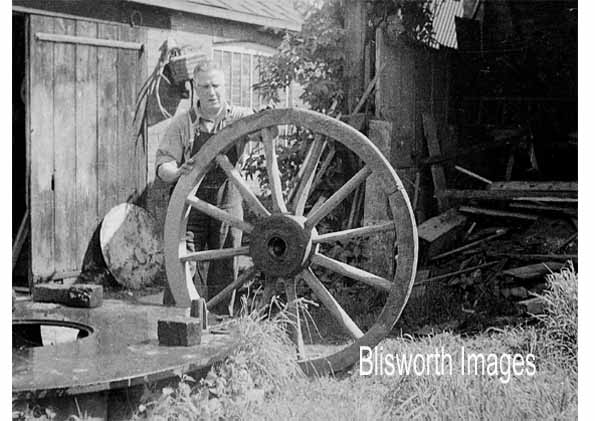 |
The central boss has been fitted with 12 spokes, in this case, and just six felloe pieces have been fitted to the outside end of the spokes; one felloe to two spokes. The neighbouring felloes in the round have been half-lap jointed. Much of the skill in being a wheelwright is obtaining a perfectly round wheel with all the spokes tightly fitted at both their ends. If he fails then the wheel may not stay perfectly round, be uncomfortable to ride on, and much weaker than it could be. |
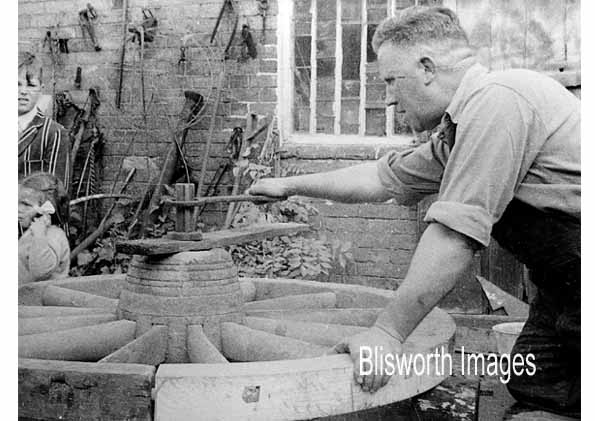 |
The wheel is clamped down to a round platform and wooden wedges are placed under each felloe as shown in the next picture.
|
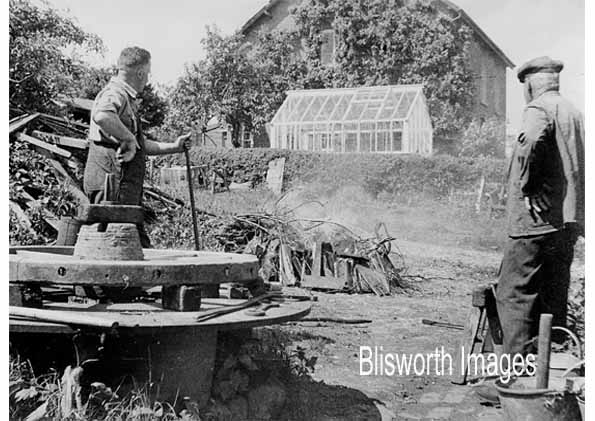 |
With the right tools set ready, a carefully
made band of iron, the tyre, is heated in a wood fire. The
best tyres have a wrought joint to form the circle rather than any rivet
which could interfere with the fitting.
The band has been made too small to slip over the wheel so that only when it is very hot can it be fitted. |
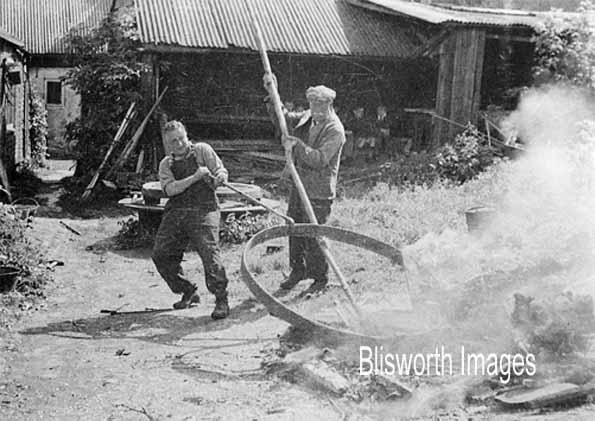 |
The tyre is quickly dragged from the fire.. |
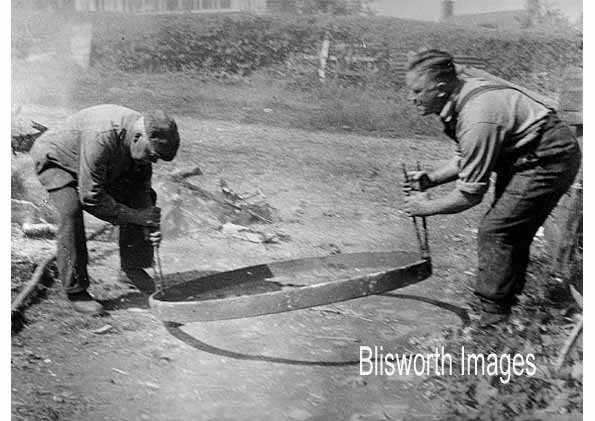 |
..picked up carefully.. |
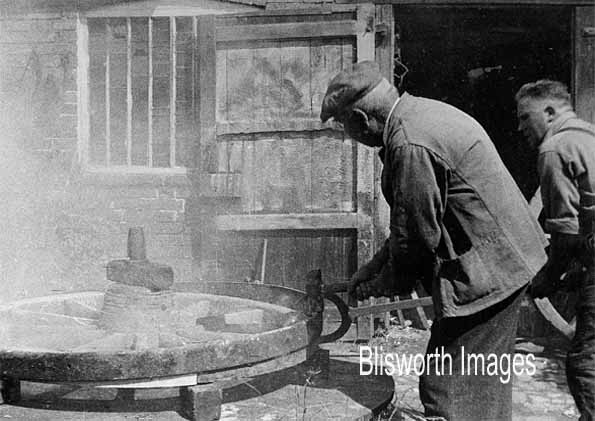 |
...and placed over the wheel and tapped into position as the hot metal burns itself into being a good fit. |
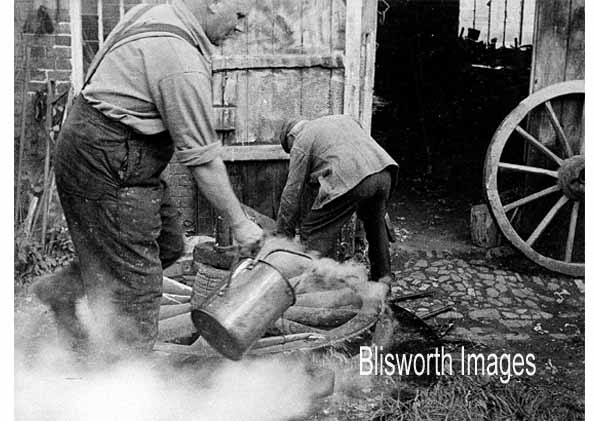 |
Before too much burning of the wood takes
place, the tyre is quickly cooled with water. It then shrinks a
little and becomes tensioned around the wheel so keeping all its
components cramped together.
The stage is then set for the next wheel. |